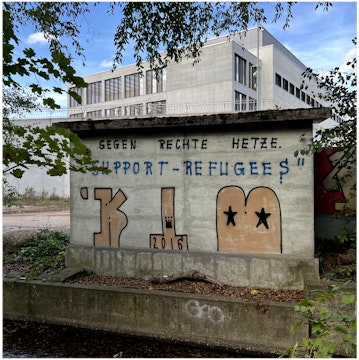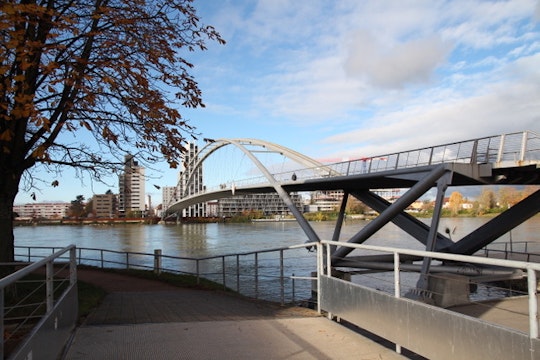Vacancy
We took a walk through the Lange Erlen…
We took a walk through the Lange Erlen…
…and here we met with tracks going into nowhere. Tracks filled with memories of movement. Ghosts.
Across the park and stretching above the meadow in the Lange Erlen (an 180 hectares forest that traces a part of the German-Swiss border in the northern part of the city of Basel), an abandoned railway, complete with stone viaducts and meadow bridges has become a haven for wildlife, earning a place in the city's nature conservation inventory.
The overgrown railway embankments and rusty bridges stand as silent witnesses to a bygone era, where the tracks, though long devoid of locomotives, still remain under the administration of the German Railway. Potential repurposing of the space as an integration platform for refugees including a cafe as working space has met with challenges that impeded the transformation of the old railway.
Encountering the tracks, marked by their ethereal presence yet abundant biodiversity, evokes a sense of being in an enchanted space. It also prompts contemplation: What does the notion of movement signify when there's no departure point or destination anymore?
This area appears to encapsulate the lived experience of asylum seekers hosted by the nearby center. Rather than perceiving their state of in-betweenness as a transitional phase marked by movement and self-determination, these asylum seekers seem to encounter it more as a limbo, akin to what researcher Duchêne-Lacroix has aptly termed "vacancy."
“Vacancy: a situation of plural or plurilocal disintegration or emptiness, a kind of wandering with or without movement. It describes an extreme aspect of spatial double absence, where mobility loses significance as the goal or meaning of movement and anchoring disappears.” (Duchêne-Lacroix, C. (2009), according to Sayad, A. (1999))









